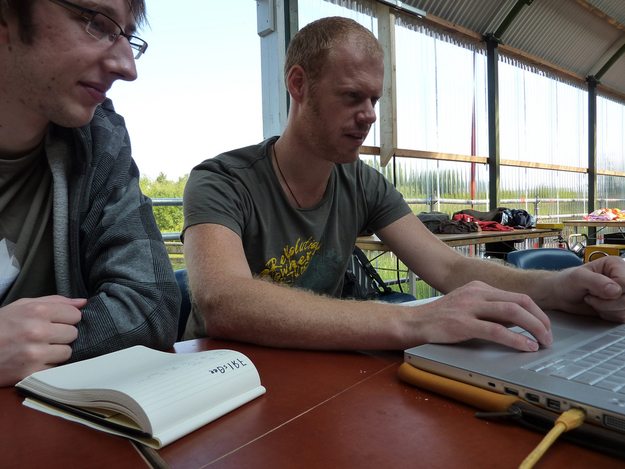Alex helping out at Hacker Camp -
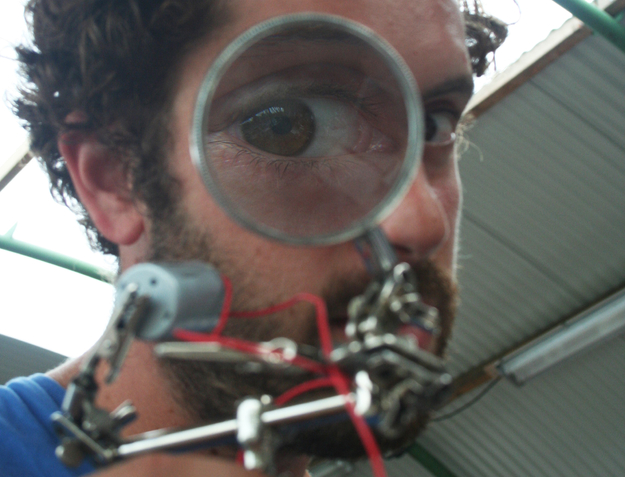
Yesterday the conceptual phase quite rapidly flowed into the assembly phase. Codes have been written, Arduinos, RFID readers and even some designing has already been finished. It looks like there will be a total of 9 projects ready for Picnic at the end of the camp.
The third day was opened by Willem, followed by Arjan who gave a short introduction into the Wiki and Trac system. Hacker Camp aims to be fully opens source and therefore the source codes of the projects will be published on the wiki.
After the introduction the different groups presented the progress of their executables. Here are some macros:
Once Upon Today (Ubi de Feo and Luis Fernandez)
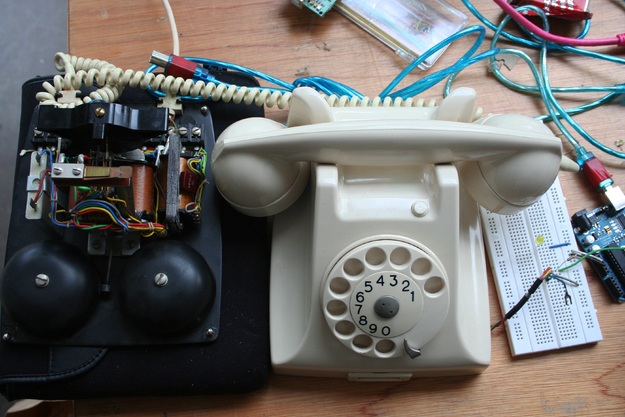
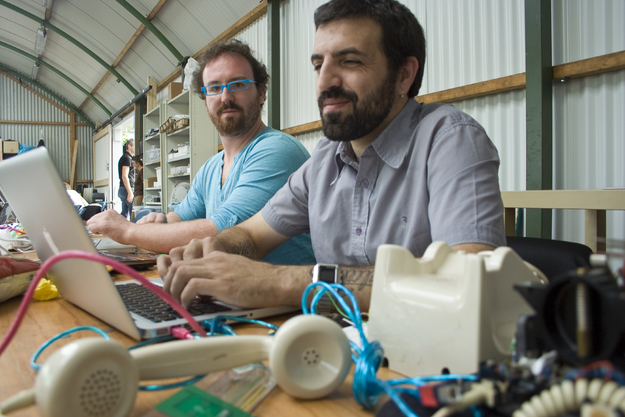
Once Upon Today is a social experience dislocated from the normal course of time. People step into a space designed to make them feel comfortable in an extemporaneous setting, not quite pertaining to today nor yesterday. Here they can communicate with other conference goers across time. The interactions and devices are familiar, but where one would expect a real telephony system to handle the messaging, Once Upon Today is a fully simulated telephone switchboard. A virtual phone network that lives only for the duration of the conference for which it was designed.
FriendSlicer (Eric Gunther, Jeff Lieberman and Andras Sly Szalai)
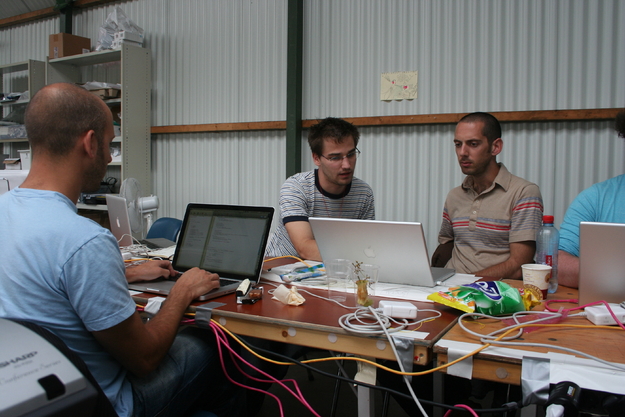
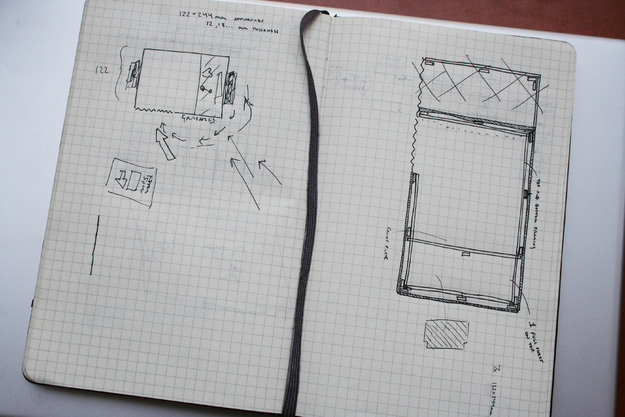
The Friend slicer is a sound booth that prompts the audience to do a series of actions that will finally result into a customary generated sliced music video (think 'amateur' from Lasse Gjertsen or 'IDM kid'). When the user steps into the booth he is asked to create a base, snare or hi-hat that will be inserted into a pre-composed (template style) audiovisual piece.
The audio samples will be cut through peek detection applied with the help of FFT (Fast Fourier Transformation). FFT converts the sound waves into a frequency band, which makes it very easy to automate the search for the start of the sample. The video sample is cut according to the sonic sample.
After the audiovisual samples have been created, the installation queries the network of the user for samples closest to the user within his network to generate a customized video. When the users steps out of the booth he will find a customary music video, created with the help of the people in his network.
Wiki of FriendSlicer
Breaking The Frame (Dan Paluska, Mike Wege and Carl Emil Carlsen)
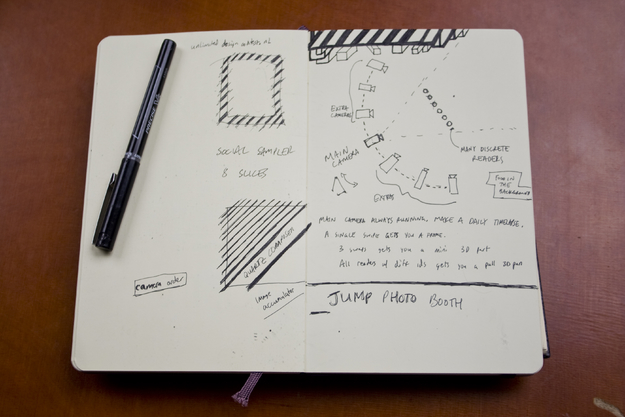
The project Breaking the frame is based on the stop motion time laps technique. Partially inspired by the photo booth installation, which was a huge success at Hackers Camp 2007, this project sets out to break the 2D frame to create a 3D experience. The installation only works for groups of three or more people, that all have to swipe their RFID tag. Once the installation is activated, an array of (10?) cameras will shut at the same time, capturing the group from multiple angles. The photos will subsequently processed into a stop motion video that will be uploaded to the profiles of the users.
Dan, who also works on this project has been experimenting with time laps for a while. Videos of him time lapsing his experiences during hacker camp can also be found on Flickr
Iktrek/Tug-0-War (Rutger Emmelkamp, Bastiaan Ekeler and coding by Erik Borra)
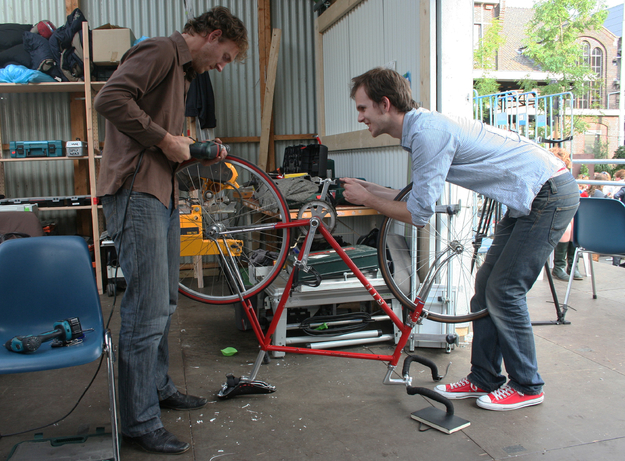
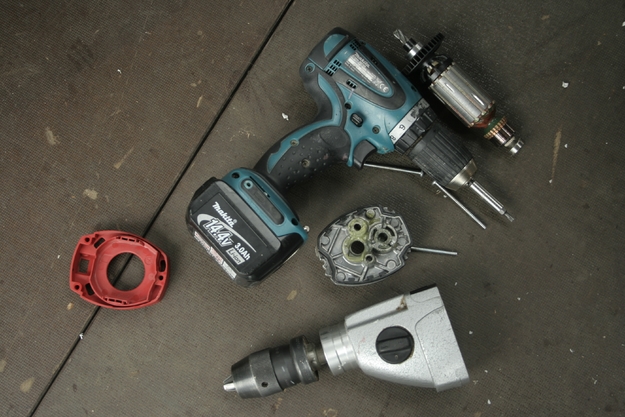
The Iktrek/Tug-O-War is a rope pulling game for 2 (or more?) persons. The strength by which the player pulls the rope not only depends on his own strength, but also on the help the player experiences from his network. The bigger the network behind the player, the more help the player experiences.
During today's physical set up it became clear that there are quite some problems with the assembly of such an installation. The plan is to make the installation work with an Arduino, that will switch the power distribution when more players opt in with the help of their RFID tags. But how do you connect an Arduino to a mechanical drill?
At least one drill had to be taken apart for serious electronic research while some special opcodes will be developed over the coming day.
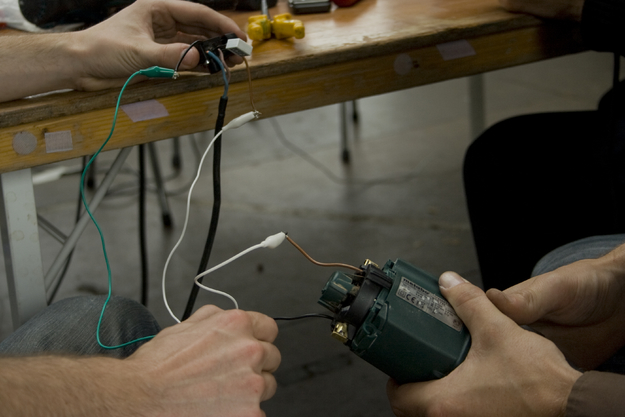
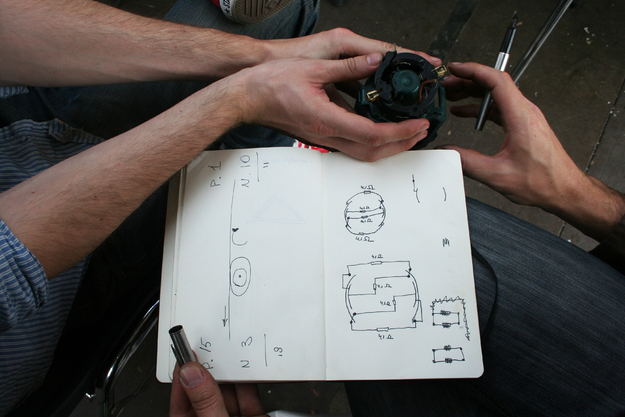
Ik-A-Sketch (Edwin Dertien and Neil Mendoza)
The worlds largest social sketching tool.
Ethernet cable swingers - Hacker Camp 2009
Work table for Ik-A-Sketch - At Hacker Camp '09
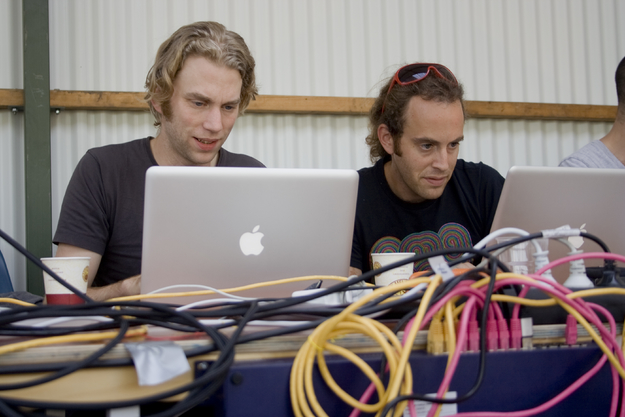
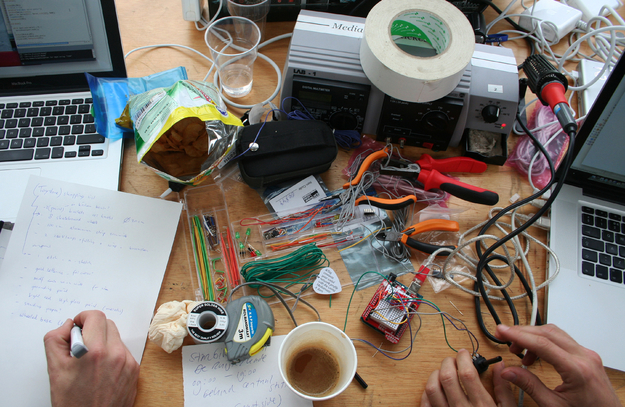
Ik-A-Sketch is a remediation of the Etch A Sketch; a thick, flat gray screen in a plastic frame that you can use as a square-styled lineographic drawing machine. There are two knobs (25cm) on the front of the frame in the lower corners, that control the height and width of the pencil. One person has to operates the right knob and the other has to move the left knob. Together they can control the installation and make a drawing that will be uploaded to their profile.
After the drawing is finished, the users have to shake the Ik-A-Sketch to start with a fresh canvas.
Wiki page of the Ik-A-Sketch
BizzyBalls (Dirk van Oosterbosch and Tim Olden and special support by Erik Borra)
or Who is who in your Picnic network
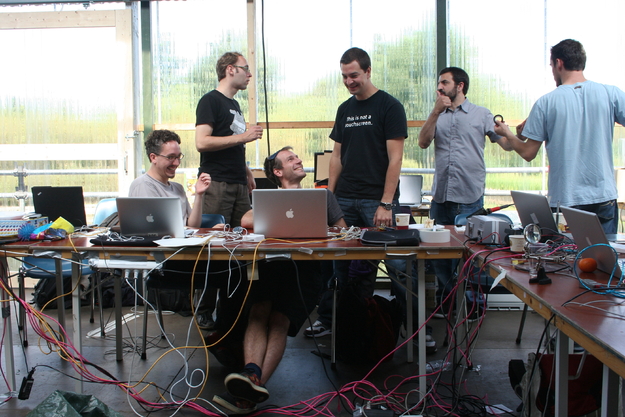
The game is a physical interpretation of the known 'Who's Who?' quiz. Two players both have a set of colored balls. After they register at the game, questions from their network are generated. The players should answer multiple choice quiz questions, like 'which person is the common one in your networks, person A, person B or person C?'. The players can answer this questions by throwing a ball through a hole in the projection.
It's a little bit cheeky: we wonder if people really know the network they claim to have.
Ikspeel (Mark Wubben and Eelco Wagenaar)
Ikspeel is an advanced frisbee game. The playing field consist of a space between three honks, that are all equipped with buzzers. If a buzzers goes of, both teams have to compete to reach the buzzing base fastest, to score a point. The match will be published on the profiles of the participants Mark and Eelco - At Hacker Camp '09
